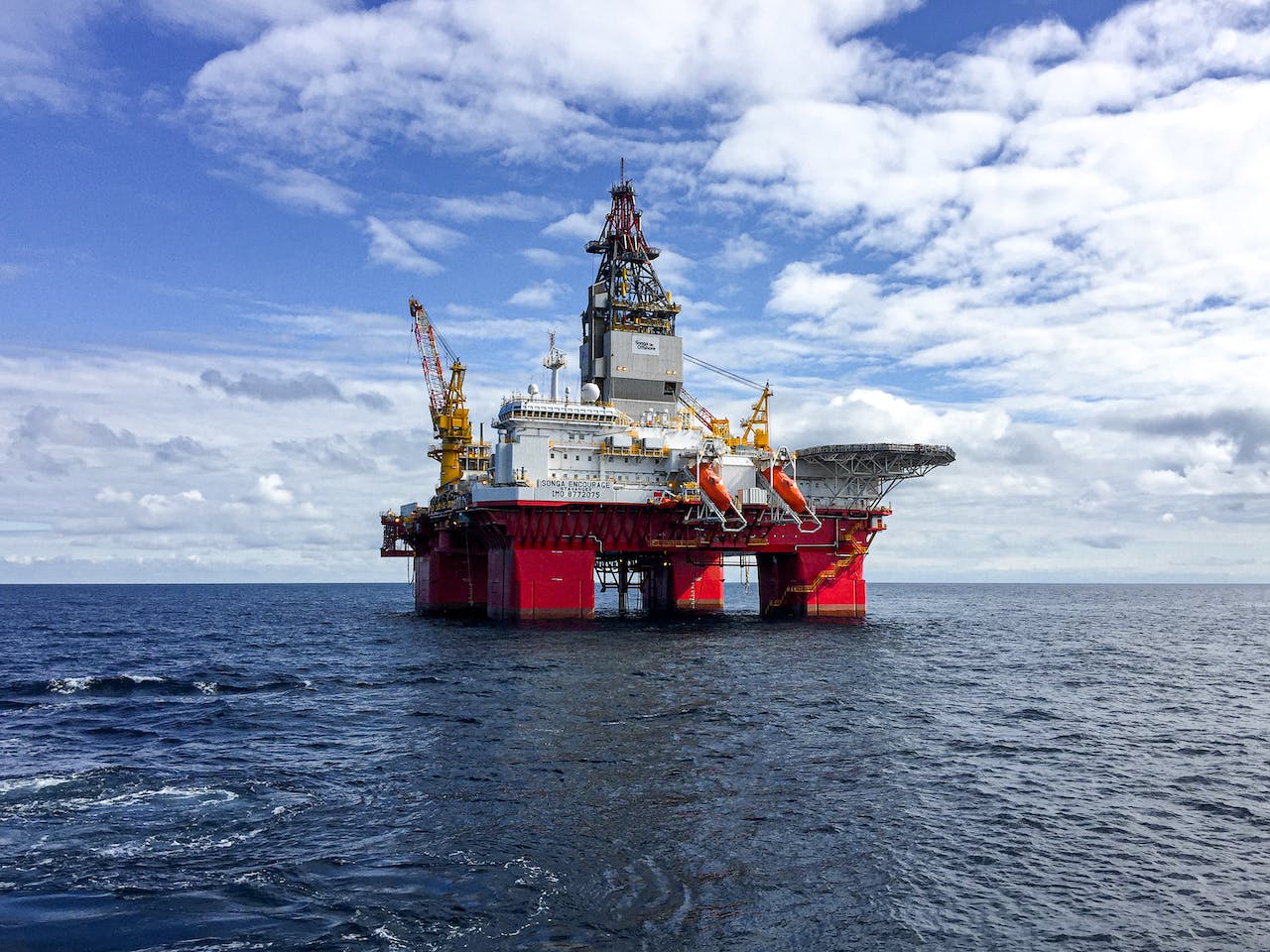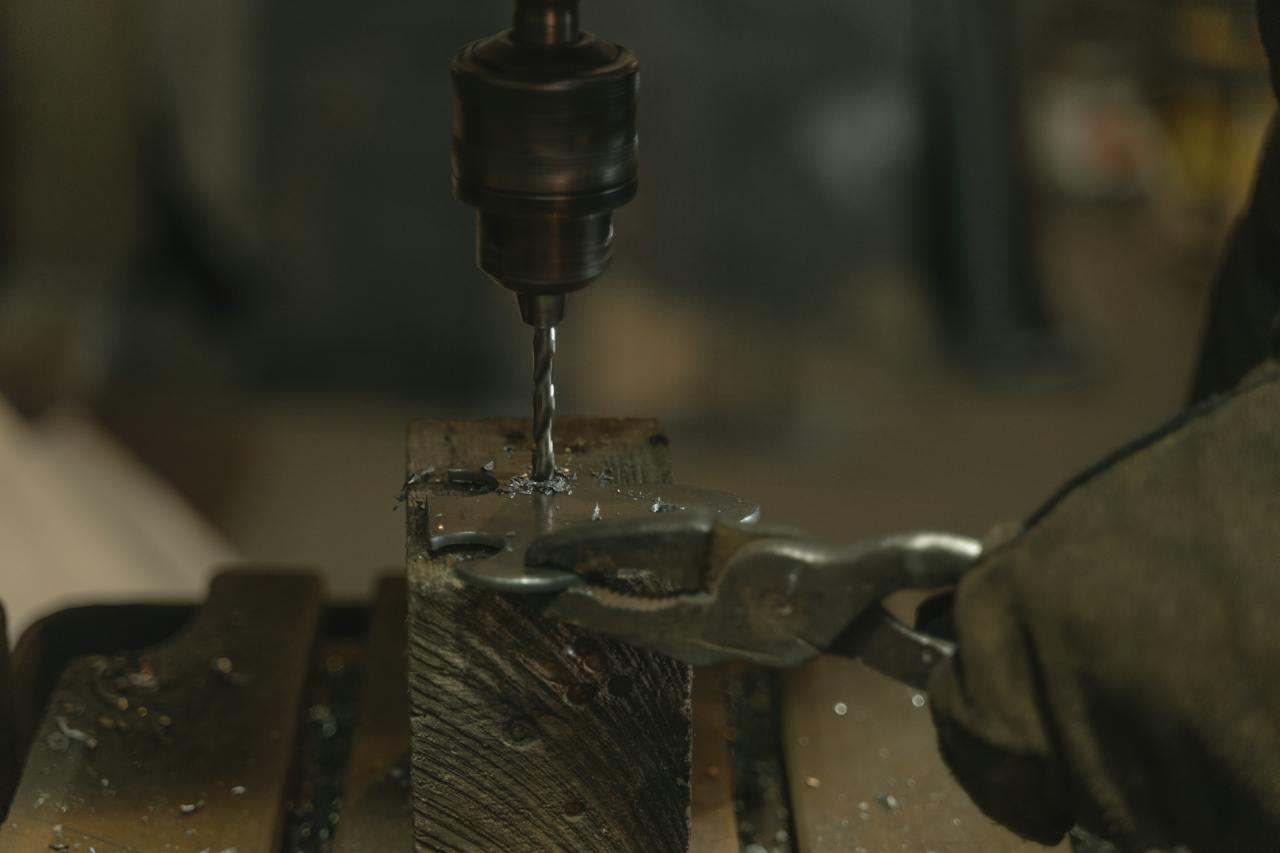
Drilling permits are the gatekeepers responsible for resource extraction inside the complex energy sector web. These official papers, which are published by regulatory bodies, have a significant impact on how oil and gas businesses operate. They make sure that drilling operations comply with strict safety and environmental regulations.
Essentially, drilling licenses are legal permissions that allow drillers to go deeper into the Earth's crust in search of rich hydrocarbon deposits. These permits represent the government's commitment to protecting our natural ecosystems and the well-being of our people; they are more than just necessary bureaucracy.
In this article, we will explore the complexities of drilling permits, including their kinds, application processes, regulatory compliance, and crucial role in maintaining the delicate balance between ecological preservation and industrial advancement.
What Is A Drilling Permit?
The term "drilling Permit" refers to the document, which may or may not be a contract or a license, that the Agency gives in accordance with which an Operator gets the right to drill a particular well for oil and gas exploration, appraisal, or development.
Before drilling any well that would reach deeper horizons, drilling contractors and well operators must first get the necessary legal authority to drill. This is referred to as a drilling permit.
The Gas Operations Well-Drilling Petroleum and Coal Mining Act stipulates that in order for sound operators to be granted a drilling permit, they must first apply in accordance with the law.
However, permission for the drilling of a well will only be given if the site of the well is at least 330 feet from the nearest outside boundary line of the land on which it is located. If this requirement is not met, the permit will be revoked.
Types Of Drilling Permits
Drilling licenses are a broad category of authorizations that are specific to different stages and objectives in the oil and gas sector. Operators and other stakeholders need to comprehend the many kinds of drilling licenses available.
Exploration Permits
With the issuance of these licenses, the drilling procedure officially began, with the primary goal being the identification and evaluation of possible hydrocarbon deposits under the surface of the Earth.
Operators who possess exploration permits are authorized to carry out initial drilling operations in order to ascertain the existence and feasibility of oil or gas reserves. Because they are investigative, they usually have a brief duration and do minor environmental damage. When venturing into unknown terrain or investigating potential opportunities, these permissions are imperative.
Production Permits
Production permits are used in the drilling process following a successful exploration phase. Production licenses are acquired to start extracting oil or gas from the reservoir as soon as viable reserves are found.
When it comes to the operational stage of drilling, these licenses are more extended and more detailed. Obtaining a production permit requires careful planning, the construction of infrastructure, and compliance with strict safety and environmental regulations. They are necessary for the continued exploitation of resources.
Injection Well Permits
These licenses relate to injection wells and depart from the conventional idea of drilling for extraction. Brine, effluent, and other fluids created during drilling operations are disposed away via injection wells. Permits for injection wells are necessary to guarantee the secure and ecologically conscious disposal of these kinds of fluids.
To stop the pollution of underground water sources, they entail a close examination of the well's construction, casing, and cementing. When it comes to disposing of drilling waste, several permissions are needed.
When deciding whether permission is required for a particular drilling operation, the differences between these permit categories are crucial. Permits for exploration start the voyage, permits for production keep it going, and permits for injection wells to handle waste disposal. Operators can secure public safety and environmental integrity while navigating the complicated regulatory landscape by coordinating drilling activities with the relevant permit.
Contacting The Correct Agency To Obtain A Drilling Permit
Find the state agency that best fits your needs. Suppose you are interested in drilling a water well. In that case, you should definitely get in touch with the Department of Water Resources in your state or another body that is comparable to it. Enter "your state" and "water well drilling permit" into a search engine to locate the appropriate department.
- Suppose you wish to drill in order to acquire access to oil or gas. In that case, you will likely be required to get in touch with the Oil and Gas Commission of your state, the Department of Environmental Conservation, or another functionally identical entity.
- Simply enter "your state" together with "oil and gas permit" into the search bar of your preferred search engine to locate the correct office.
- You will need to get in touch with the appropriate district office in certain states, such as California. You can locate the appropriate person to contact by visiting the Department of Conservation website for your state.
Get In Touch With The Department's Administration
Getting in touch with the administrator in charge of drilling for your state may streamline the procedure for obtaining a permit. Check to see if you can locate an email address or a phone number. This individual can assist you with the application process.
Create An Account To Have Access Online
You can apply for drilling permission through the website. If this is the case, the state will require you to fill out a form in order to register your business for an online ID. In the state of Texas, for instance, you are required to finish filling out the form for the Security Administrator Designation for Electronic Filing. The following data will be requested from you when you fill out the form.
- Information on the firm, including but not limited to its name, postal address, phone number, and email address, the name of your system administrator for security, along with their contact details,
- An initial password with a single usage between 6 and 30 characters is extended and may include numbers, letters, and special characters such as #, @, and other similar symbols.
- Your name and signature.
How To Complete An Application For Drilling Permit
Make Sure That You Have A Lease
Be sure that you have an oil and gas lease in place before applying for an oil and gas drilling permission. This is a prerequisite for obtaining such a permit. In order to complete your application, you are going to require information on the lease, such as the location of the property's physical limits.
Log Onto The Electronic System
You may apply for a drilling permit online in Texas, for instance, by going into their portal. Make use of the login and password that were provided to you by the applicable state agency.
Provide The Required Information.
On the website for the state of Texas, navigate to the "Drilling Permits" option, and while there, indicate that you are applying for a new permit. As part of its permission procedure, each state will inquire about information that is unique to that jurisdiction. On the website for the state of Texas, you will be asked for the information shown below.
- Reason for submitting the document.
- Wellbore profile, including the lease name, okay number, total vertical depth, county where the drilling will take place, and GPS coordinate information.
Get A Paper Application
When applying for drilling permission in some states, one of the available options is to submit a paper application instead of an online one. An excellent illustration of this may be seen in the state of New York, where potential applicants can receive a permission application as well as thorough instructions by going to the Department of Environmental Conservation website.
If you want to investigate this possibility, you should get in touch with the appropriate department as soon as possible to inquire about the possibility of submitting a paper application. In addition, examining the department's official website might give insightful information on the application procedure as well as the readily available resources.
Complete The Application
The most crucial part of applying for drilling permission is filling out the application, which requires careful attention to every detail. It is recommended to enter the necessary information legibly and ideally through the use of a typewriter whenever it is possible to do so. Some programs are available for download as PDFs, which allows for immediate data entry and the archiving of documents.
Although the specific requirements may vary from state to state, the information that is typically requested in applications of this nature includes the nature of the planned operation, the precise, healthy location details, proposed spacing, and sound data, information on casing and cementing, and most importantly, your signature.
The type of well (new or existing), the nature of the planned operation, the owner's name and business address, the precise, OK location details, and proposed spacing and sound data are also typically requested.
Collect The Necessary Documentation
In addition to the application itself, the instructions for the application may direct you to provide other papers. If so, you will need to comply with these directives. These papers can take on a wide variety of forms.
Still, they often consist of certified copies of plats (survey maps) that outline the planned well site as well as the borders of the lease or unit, spacing unit maps, the proposed drilling program, an environmental assessment form, and sometimes additional relevant records. It is vital to carefully examine the particular document requirements mentioned in the application instructions in order to guarantee a complete submission.
Contact The Agency For Help
If you need help navigating the complicated steps involved in the permit application process, feel free to ask for help from the appropriate government office. The contact information for an agency is often made available on its website, where users may choose to communicate with the agency by email or make direct phone inquiries.
Seeking clarification and direction can assist in improving the efficiency of the application process and ensure that details are accurately recorded.
Pay The Required Fees
The payment of the necessary fees is an essential component of the application procedure. If you fail to complete this stage, your application may be subject to a delay or be denied entirely.
Those who filed their application for a drilling permit online have the advantage of being able to make their payment through the online portal using a credit or debit card, which is typically more convenient.
Submit The Application
After you have finished filling out a paper application, it is a good idea to keep a duplicate of it for your records, even if it may not be required. The very last thing to do before applying is to compile all of the required paperwork, which includes a finished application, any relevant supporting documentation, and any appropriate payment (a check or money order).
It is common practice to provide the exact submission address inside the application itself; however, in the event that this is not the case, it is recommended that you get in touch with your state office for submission instructions.
Wait For Approval
After we have received your application, the team at the agency will immediately begin an in-depth evaluation. They will generally get in touch with you in the event that any vital information needs to be included or more clarification is required.
Notifications of approval can be sent either via email or traditional mail. It is of the utmost importance to practice patience during this period and to refrain from beginning drilling activities until the permission is formally issued. Beginning drilling activities before the permit has been officially granted might result in fines and other legal repercussions.
Cost Of Drilling Permit In USA
The price of acquiring a drilling permit in the United States can vary significantly greatly based on a number of variables, such as the well's kind, location, and the particular regulations enforced by local, state, and federal authorities. Regarding the price of drilling licenses in the United States, keep the following considerations in mind:
Variability By Jurisdiction
Drilling permit prices vary from state to state throughout the nation. Every state has its own set of fees, and occasionally even local governments have as well. Furthermore, separate price schemes apply to licenses for drilling on federal lands or offshore regions.
Type Of Well
The kind of well-being drilled affects how much a permit will cost. Fee arrangements for production, injection, and exploration wells could vary.
Application Fees
Application costs are usually required for drilling permits, and they are not refundable. These fees cover the administrative expenses incurred in evaluating and processing applications.
Renewal Fees
Specific permissions could need to be renewed on a yearly or recurring basis, and there might be fees associated with each renewal. Operators must budget for these ongoing expenses.
Additional Costs
There can be other expenses in addition to permit fees, such as those for compliance monitoring, well inspections, and environmental impact assessments.
Regulatory Changes' Effects
Modifications to federal, state, or municipal laws and practices may also have an impact on permit prices. Changes in regulations might result in modifications to charge schedules.
Fees For Consultation
In order to manage the permitting procedure, many drilling operators opt to collaborate with consultants or legal specialists, which can raise the entire cost.
Drilling Permit Regulations Of The USA
- In the United States, drilling licenses are subject to a complicated network of federal, state, and municipal laws.
- For onshore drilling on federal lands, the Bureau of Land Management (BLM) is the principal federal agency in charge of granting drilling licenses; for offshore drilling in federal seas, the Bureau of Ocean Energy Management (BOEM) is in charge.
- Additionally, each state has its own regulatory body that keeps an eye on drilling operations inside its boundaries. These organizations frequently have different policies and guidelines.
- Typically, the permitting procedure includes the submission of thorough applications that contain details on safety precautions, environmental impact analyses, and sound design.
- Environmental rules are essential because they handle issues like animal preservation, oil spill avoidance, and the quality of the air and water.
- Regulations pertaining to worker safety and the transportation of hazardous items are established by the Department of Transportation (DOT) and the Occupational Safety and Health Administration (OSHA). Agencies may hold public hearings and comment periods to solicit feedback from stakeholders and communities, as public involvement is frequently mandated.
- Inspections, audits, and sanctions for noncompliance, including fines and drilling activity suspension, are used to enforce adherence to drilling permit restrictions.
- Drilling permit requirements might alter as a result of administration changes and changes in environmental regulations, which can affect the regulatory environment over time.
- Operators must stay up to date on the most recent rules and maintain strict adherence to them in order to traverse the intricate US regulatory process successfully.
FAQs - Drilling Permit
How Long Is A Drilling Permit Good For In The UA?
You have two years from the initial filing's approval date to spud the well.
How Long Is A Contract For Oil Drilling?
Typically, it takes between six and twelve months, depending on the business and the particular project.
How Much Does A Well Drill In The United States Cost?
The typical cost of drilling a residential water well is between $25 and $65 per foot, or $3,750 and $15,300 for the entire system, including installation.
Conclusion
Drilling permit management is a complicated but essential aspect of ethical resource extraction. In the oil and gas sector, these permits act as the protectors of safety and the environment. They draw the limits that drilling operations must stay inside while striking a balance between the need to produce energy and the need to protect our natural ecosystems.
Regulatory criteria must be strictly adhered to, whether getting an injection well permission for responsible waste disposal, a production permit to continue resource extraction, or an exploration permit to begin the search for unexplored resources. Permits for drilling need accuracy, examination, and devotion to following the rules.



